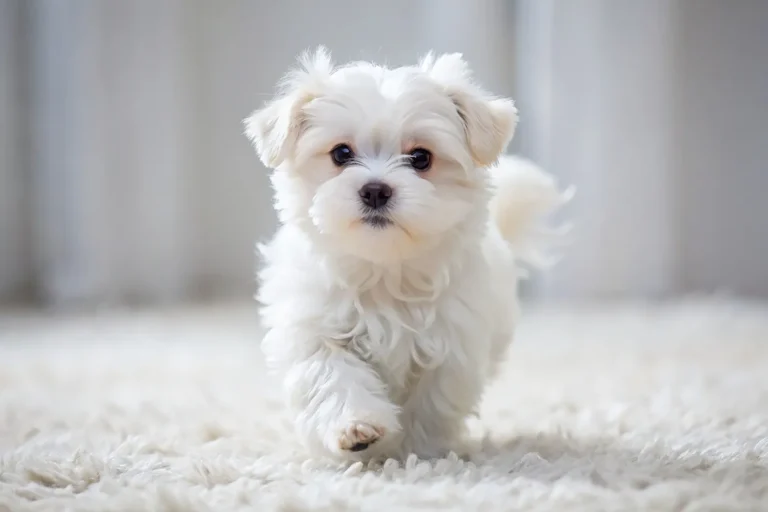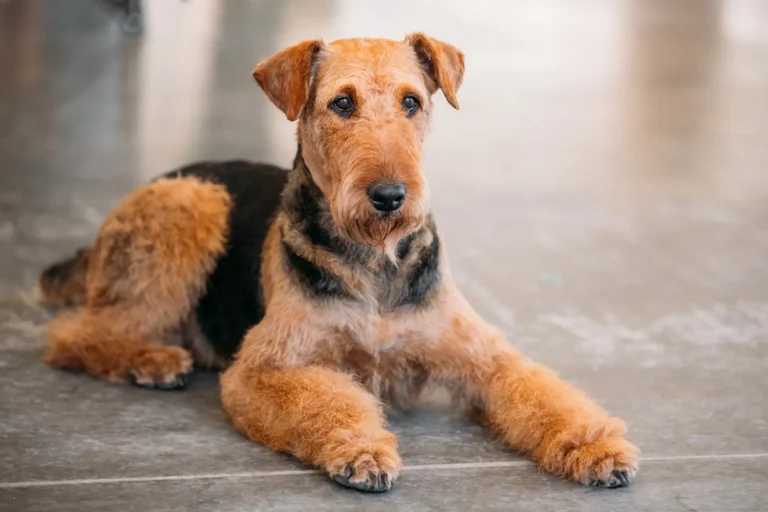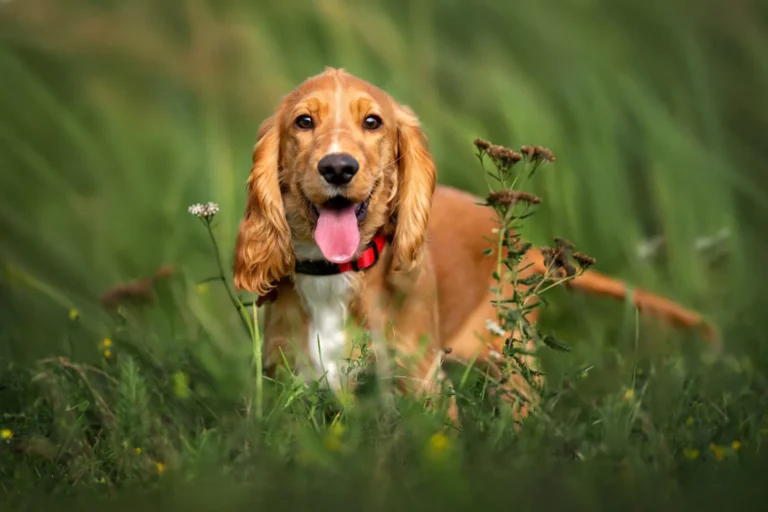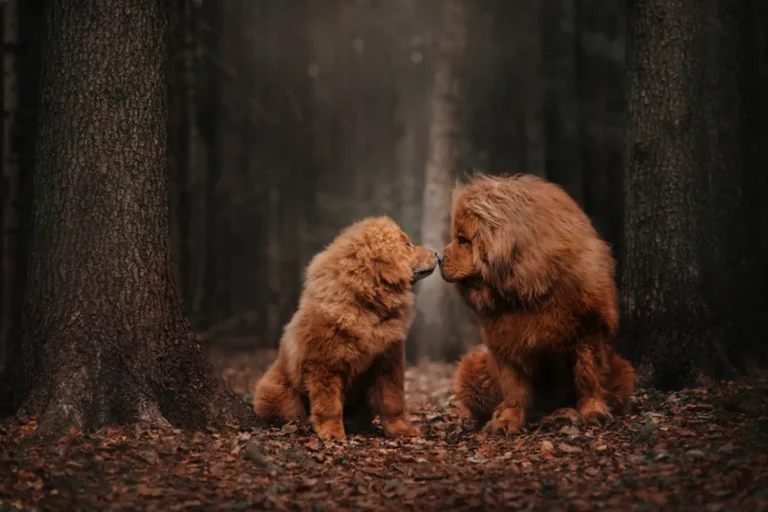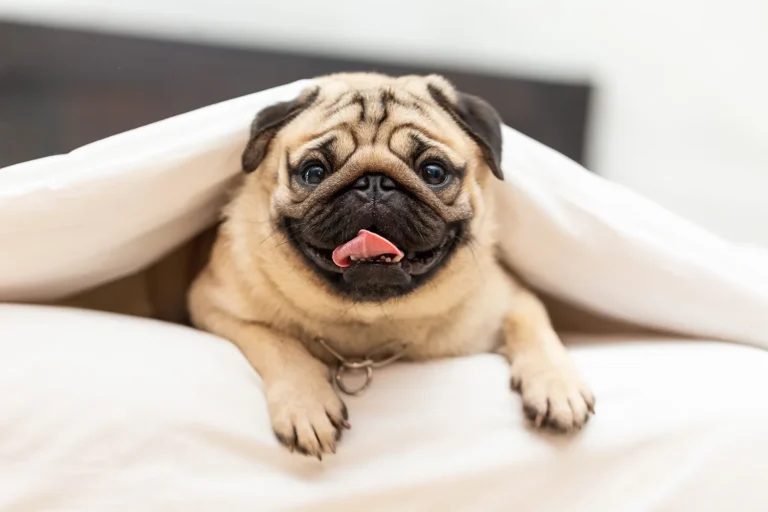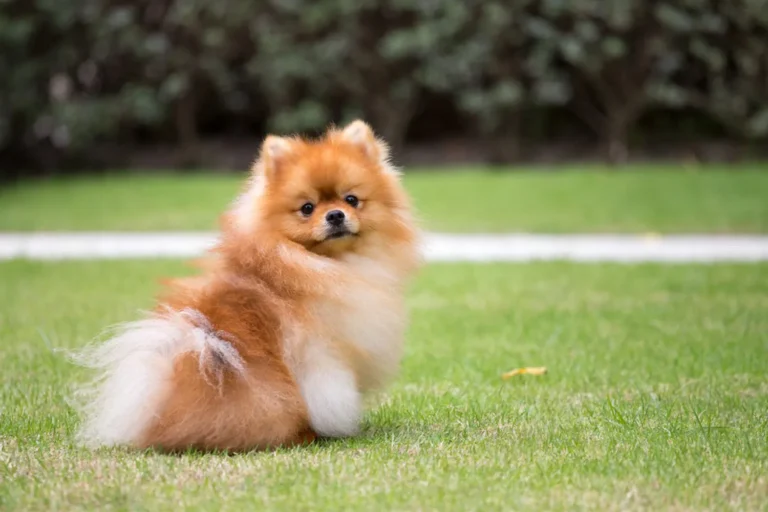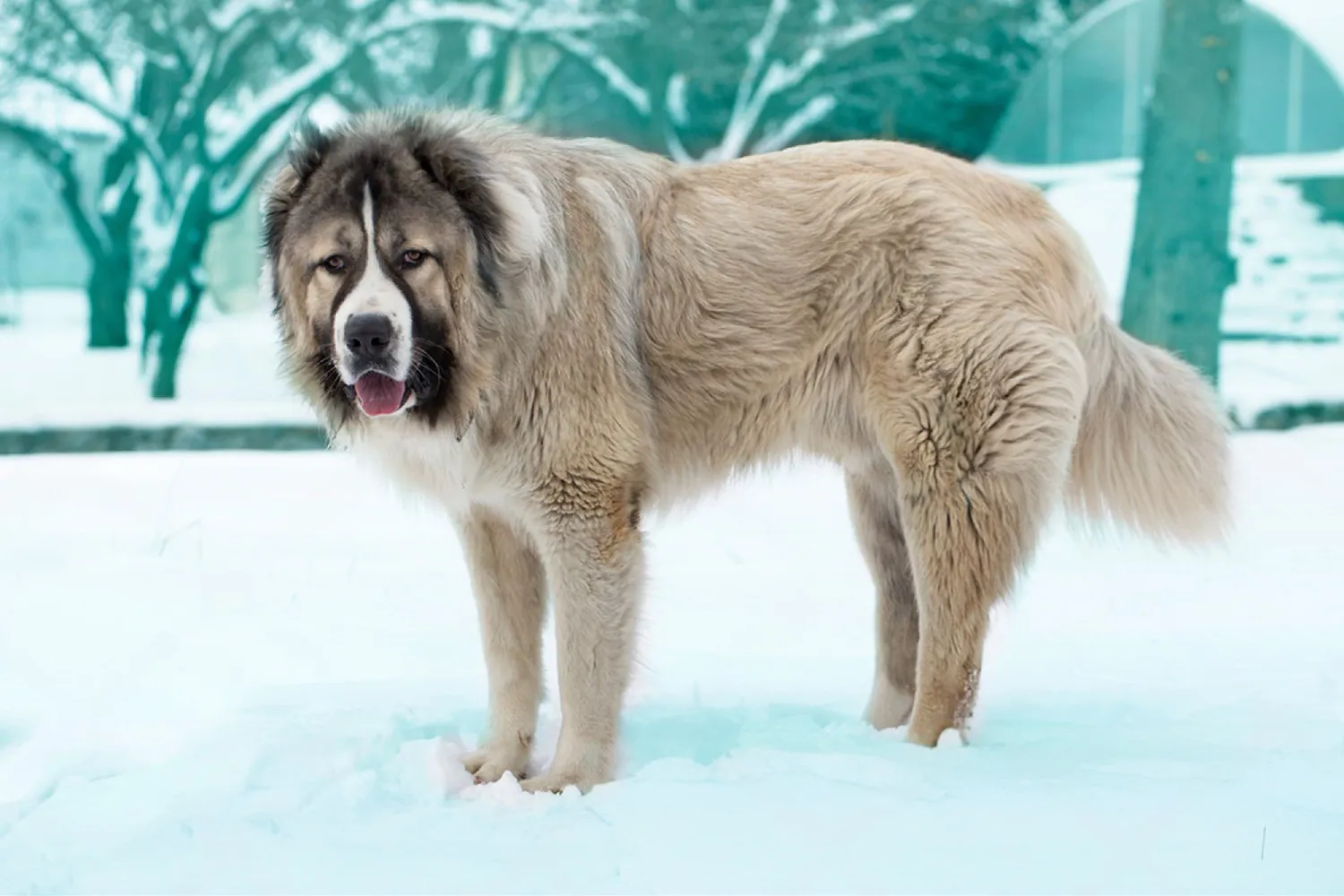
The Caucasian Shepherd dog carries centuries of stories. Their strength has guarded flocks and families, but it’s also been exploited by people chasing intimidation. I once met a gentle giant at a rescue behind the bear coat was a calm, steady gaze. With respectful handling and early socialization, they shine; choose ethical sources and commit to training.
History and Origin of the Caucasian Shepherd Dog
This breed carries a story as grand as the mountains it comes from. The Caucasian Shepherd Dog, also known as the Caucasian Ovcharka, traces its roots back nearly two thousand years to the rugged Caucasus Mountains of what is now Russia and Georgia. Imagine those steep, wind cut passes, flocks spread out like clouds on the hillsides, and a massive, steady dog padding the perimeter at dusk. These dogs were bred to be livestock guardians quiet observers with the courage to face wolves, bears, and thieves when needed. Their thick coats, big boned frames, and cool headed nature weren’t just impressive; they were practical tools for survival in a harsh climate.
As history marched on, their job evolved. The very traits that kept sheep safe size, unwavering loyalty, and a natural suspicion of strangers made them valuable beyond the pastures. They were used at prison facilities in the USSR and eventually moved into broader military roles. During the Cold War, East German forces put Caucasian Shepherds to work guarding the Berlin Wall. Their calm patience was ideal for long patrols; they didn’t waste energy barking at every shadow, but they were ready to act when it counted. After the Wall fell, many of these dogs were given to East German families as pets. I once chatted with a couple in Leipzig who had adopted one of those retired guardians. For weeks, he paced their backyard like he was still on duty, gently bumping the fence corners on a nightly patrol, and then slowly settled into a new rhythm of couch naps and neighborhood walks.
All of that history shapes how they behave in a home today. A well bred Caucasian Shepherd is deeply bonded to their family, thoughtful rather than flashy, and naturally wary of unfamiliar people. That doesn’t mean they’re unmanageable it means they’re independent thinkers who need calm, consistent guidance. If you’re considering one, start early with socialization and build rock-solid routines. Keep training low drama and clear; these dogs respect fairness more than fuss. A breeder I spoke with in Georgia told me they value a dog that can make good decisions on its own, and I’ve found that to be true set boundaries, give them a job (even if it’s just “walk the fence line with me” every evening), and they thrive.
They aren’t dog park butterflies, and that’s okay. They’re happiest when they have space, security, and a family that appreciates their steady presence. The Caucasian Shepherd’s journey from ancient mountain guardian to Cold War sentinel to devoted family protector isn’t just a history lesson; it’s a reminder to honor what’s in their bones. With the right home and respectful handling, you get a loyal, gentle giant who takes their responsibilities seriously and loves their people with quiet, mountain strong devotion.
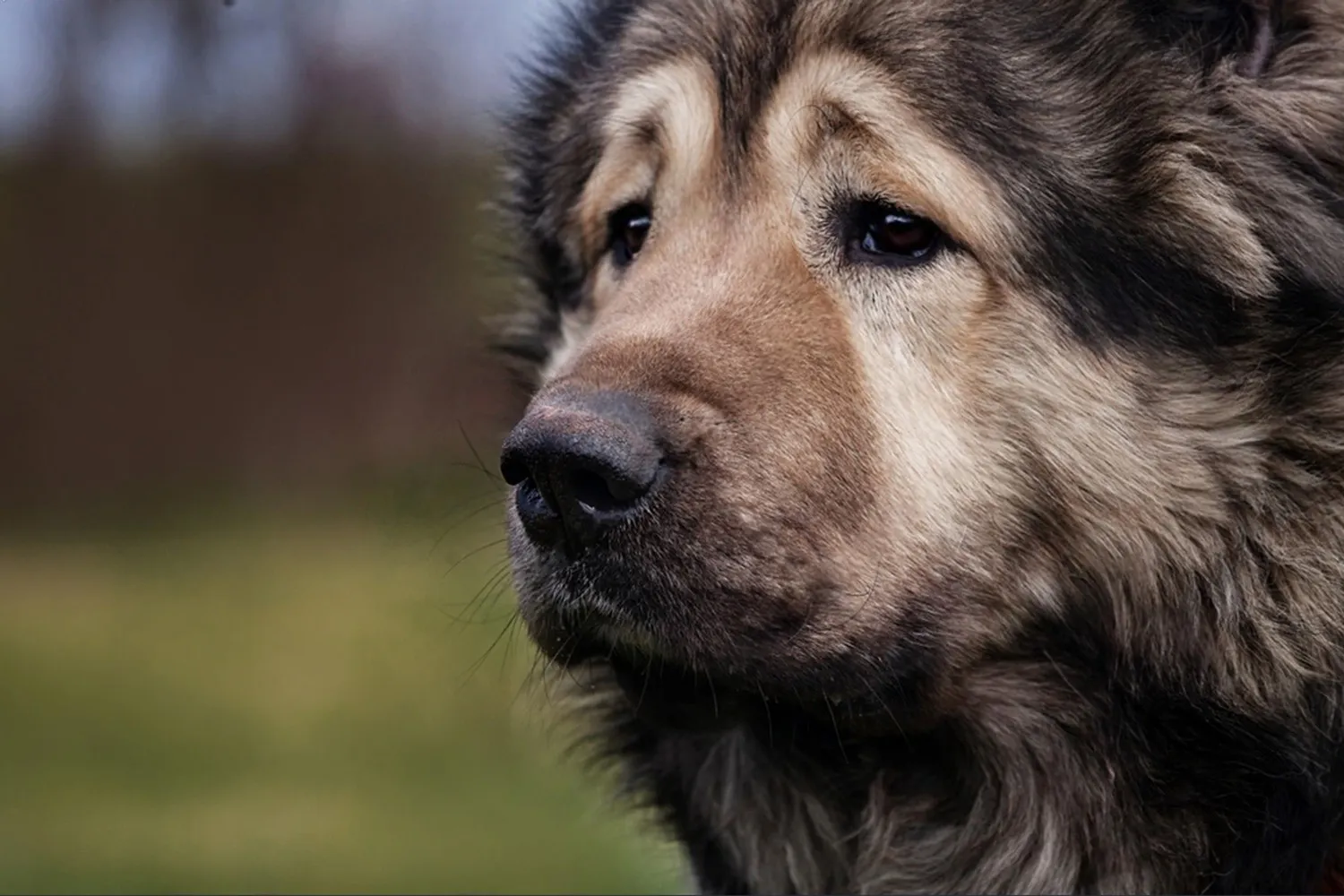
What Is a Caucasian Shepherd Dog?
Think of a dog built for mountain life and serious jobs, and you’ll land on the Caucasian Shepherd. This is a large, powerful working breed developed to guard livestock and property, and you can feel that purpose the moment one lumbers past you like a walking bear rug. That thick, weatherproof coat isn’t just for show it shields them from rain, snow, wind, and even helps protect against scrapes and bites from would be predators. I remember meeting one on a chilly morning at a ranch; while I was shivering in three layers, he was sprawled in the frost like it was a heated blanket, blinking at me as if to say, “This? This is spring.”
You’ll hear this breed called by many names, depending on where you are:
– Caucasian Shepherd
– Russian Bear Dog
– Caucasian Ovcharka
– Baskhan (Karachay) Pariy
– Caucasian Mountain Dog
Whatever you call them, they’re impressive, confident, and deeply loyal to their family. With that loyalty comes a guardian’s mindset, so early socialization and steady, experienced handling are key. They do best with space, a secure fence, and a clear routine. One time I helped a friend brush out her Caucasian Shepherd after a muddy hike we filled a whole trash bag with undercoat and still found tumbleweeds of fluff in the hallway a week later. Plan on regular grooming and teach them to love the brush early.
The Caucasian Shepherd Dog is recognized by several kennel clubs, including the American Kennel Club (AKC), which officially recognized the breed in 1996. If you’re drawn to their steadfast nature, do your homework, meet a few in person, and be ready for a big heart in an even bigger coat.
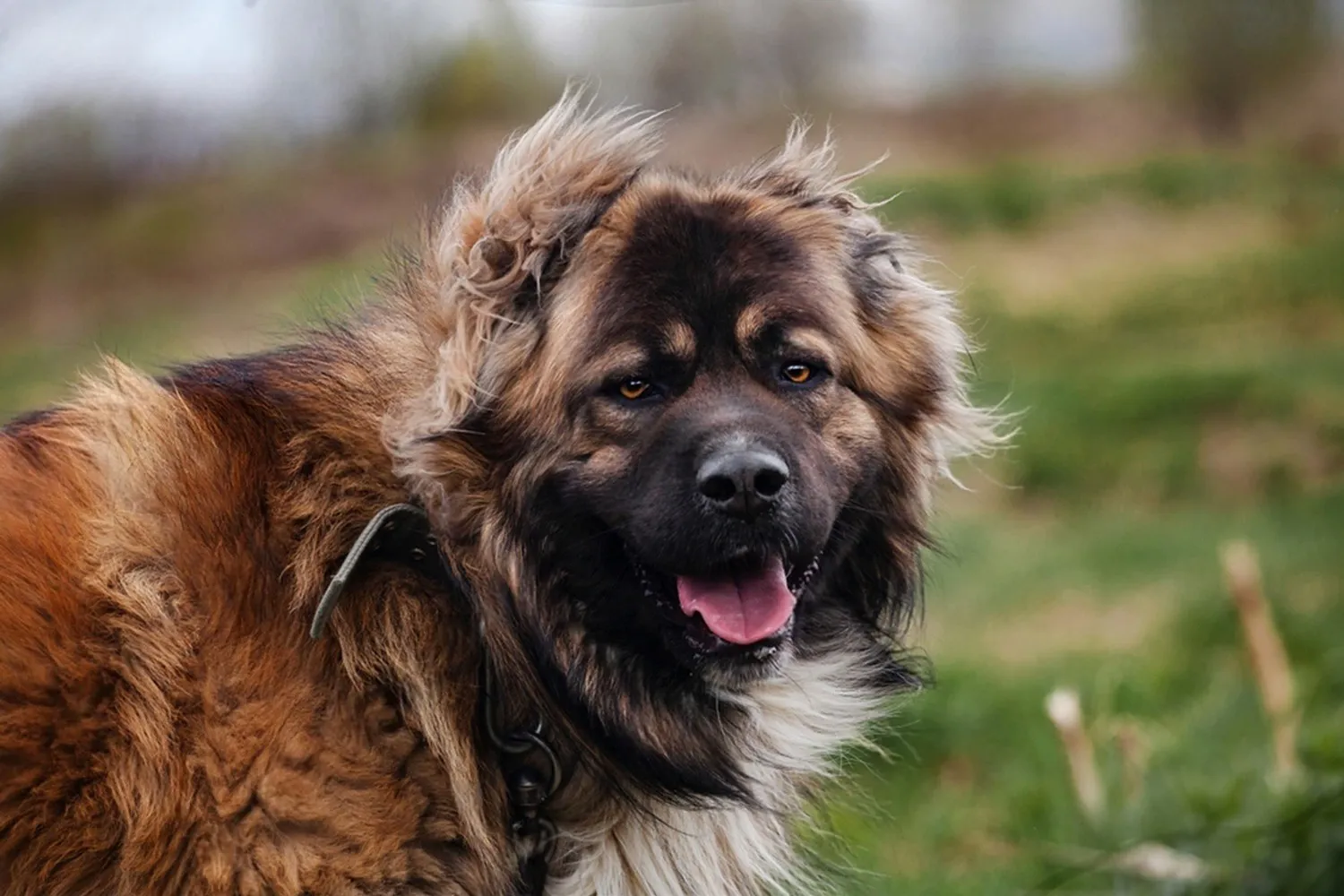
Who is a Caucasian Shepherd Dog best for?
If you’re dreaming of a living teddy bear who doubles as a serious guardian, the Caucasian Shepherd might catch your eye. But this is not a beginner’s breed. They do best with experienced owners who are confident handling very large dogs and who understand natural protective instincts. Think calm, assertive, and consistent. If you’ve managed strong willed breeds before and you respect clear rules, you’re on the right track.
Household dynamics matter a lot with these dogs. They typically don’t enjoy sharing space with other dogs, and dog parks are a no go. If you want a Caucasian Shepherd in a family setting, it’s ideal to bring a puppy into a home with kids so they can grow up together slow introductions, careful supervision, and clear boundaries from day one. Introducing an adult Caucasian Shepherd into a busy household or into areas packed with other dogs can be stressful for everyone, and I wouldn’t recommend it. A friend of mine who runs a small farm raised her Caucasian Shepherd pup alongside her children and goats; because the dog grew up understanding “these are my people and my animals,” the relationship has been smooth. But it took daily training and watchful management.
Activity wise, these dogs aren’t built for agility courses or marathon runs. As adults, they’re surprisingly laid back and won’t burn energy just to entertain you. They prefer purposeful exercise patrolling a property, a steady walk, then a nap in a shady spot. I once met a massive male who snoozed under an oak tree for hours, only springing up when a strange truck rolled down the driveway. Mental work helps, too: calm leash manners, obedience refreshers, and controlled “place” training. They respond to steady, fair leadership far more than high energy games.
Environment is the big decider. Caucasian Shepherds are not city dogs and certainly not apartment pets. They thrive on ranches or spacious rural properties where they can watch, patrol, and protect. Solid fencing is non negotiable I tell people to think “fortress level secure.” Expect some barking; it’s part of their job description. Their thick coat loves cold weather; in summer, shade and cool rest spots are a must. A breeder I spoke with in a mountain town swore by early boundary training: walk the perimeter daily with your pup so they learn what’s theirs to guard.
If you want a devoted guardian, have room to roam, and can commit to early socialization, ongoing training, and thoughtful management, a Caucasian Shepherd can be a remarkable partner. If you’re new to large, independent breeds or live in a dense neighborhood, consider a more easygoing companion. Before you decide, meet adult dogs, talk to a reputable breeder or rescue, and, if possible, consult a trainer experienced with livestock guardian breeds. It’s a big decision and the right match makes all the difference.
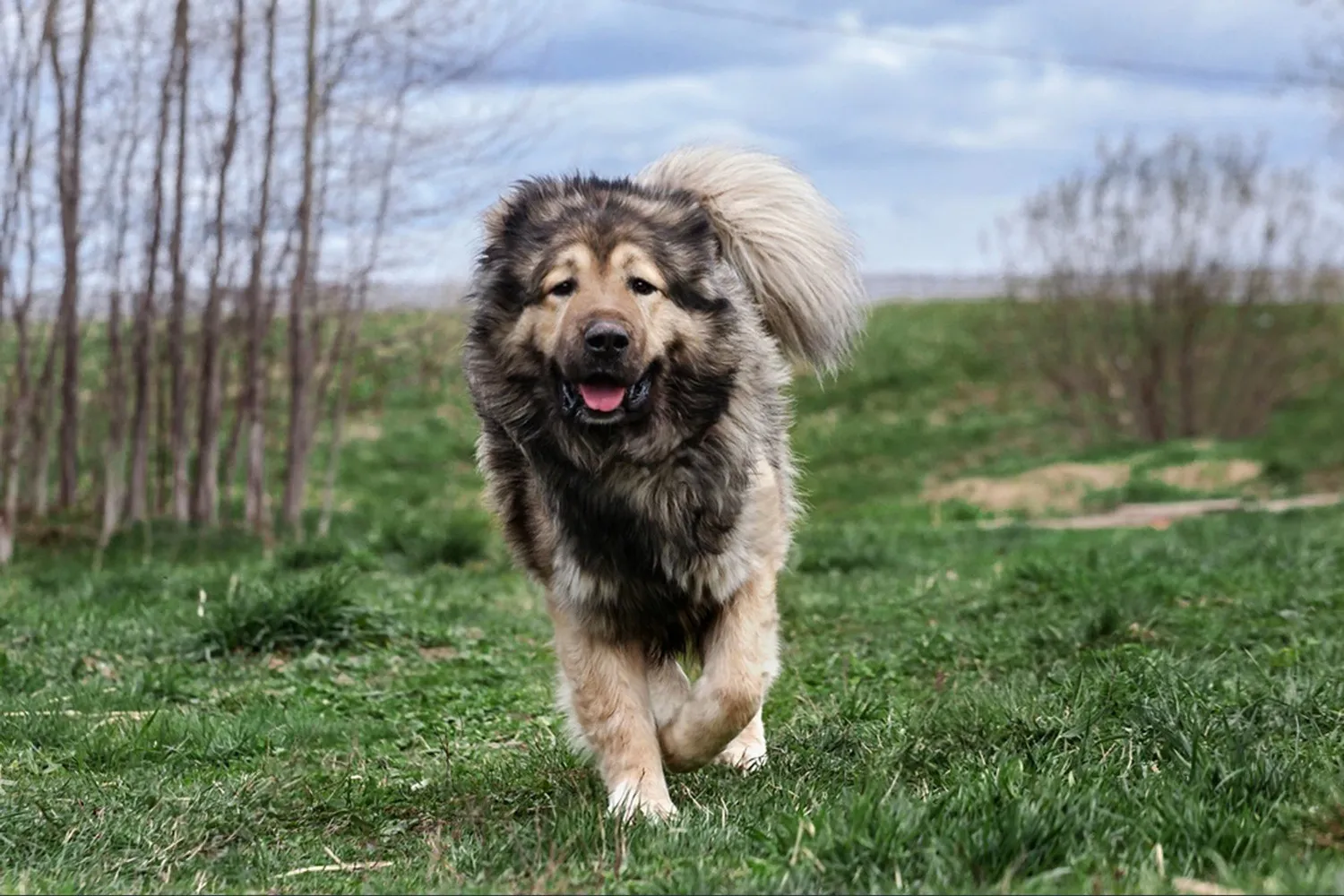
Caucasian Shepherd Dog Grooming & Shedding
If you’re bringing a Caucasian Shepherd into your life, get ready to fall in love with a glorious, thick double coat and to find that same coat on your clothes, furniture, and possibly the neighbor’s fence. These dogs come in three coat lengths, including a very long variety that gives them a full on lion’s mane. Their coats often have white markings and a dark facial mask, and you’ll see rich shades like grey, red, tan, fawn, and brown. I once met a long coated male named Atlas whose mane caught the sunlight like a halo; he looked like royalty and shed like a champion.
Grooming isn’t optional with this breed it’s a lifestyle. Daily brushing is ideal, but if your schedule is packed, aim for two to three times a week to keep mats at bay. I like a combo of an undercoat rake and a slicker brush, working in sections from the skin out. Pay special attention behind the ears, under the collar, in the “pants” on the hindquarters, and around the mane. A breeder I spoke with in Colorado swore by a weekly “line brushing” session and it truly helps slow, methodical, and very satisfying when the undercoat comes loose in soft clouds.
Shedding is steady year round, but once a year you’ll experience the big blow when it feels like they lose their entire coat in a dramatic, fluffy avalanche. I’ve filled entire trash bags in a single afternoon during coat blow season. That’s a great time to schedule extra brushing, and if you have access to a high velocity dryer, it’s a game changer for blasting out loose undercoat after a bath.
And speaking of baths: yes, they need them, but be prepared. Their size and independent streak make bath day an event. I once tried bathing a friend’s Caucasian Shepherd in the backyard; I ended up wetter than the dog and had to bribe him with cheese to finish rinsing. Use a non slip mat, lukewarm water, and a gentle dog shampoo. Rinse, then rinse again any leftover suds can irritate their skin. Drying is crucial for that dense coat; towel thoroughly and, if possible, use a dryer to prevent damp spots. Avoid shaving their double coat it can damage how it protects them. A tidy trim on the feet and sanitary areas is usually enough.
Keep a stack of drool cloths handy they’re enthusiastic droolers. I stash microfiber towels by the water bowl and drape a bandana on heavy drool days. Round out the routine with regular nail trims, ear checks (that mane collects stuff), and a quick wipe down of the chest and ruff after meals. With a little consistency and the right tools, your majestic fluffball will look and feel fantastic and your vacuum will get a great workout.
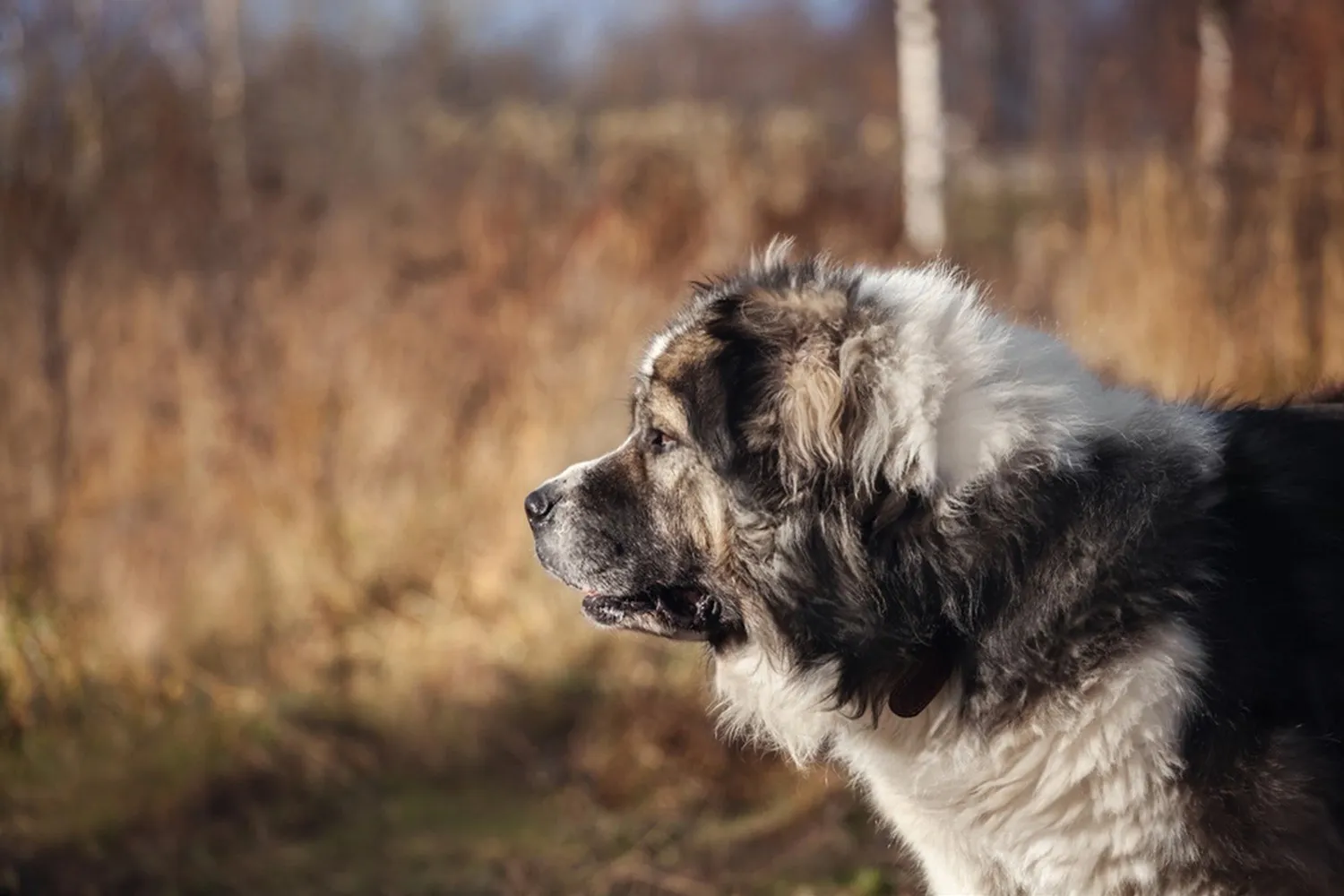
Do Caucasian Shepherd Dogs Bark a Lot?
Day to day, these big guardians are surprisingly quiet. They’re not the chatty, every squirrel gets a comment kind of dogs. Most of the time, a Caucasian Shepherd will lounge, watch, and keep their thoughts to themselves. But when their protective switch flips say, someone’s at the gate or there’s a strange noise after dark you’ll hear a deep, serious bark that means, “Hey, pay attention.” It’s not constant, but it’s impossible to miss.
I remember visiting a friend whose Caucasian Shepherd, Misha, barely made a sound all afternoon, even with kids running around. Then a delivery driver hesitated at the front steps and Misha let out two thunderous warnings just two and that was enough. No frantic yapping, just a clear alert. That’s typical for the breed: they conserve their voice for when it matters.
A little guidance goes a long way with these dogs. Early socialization helps them tell the difference between normal life (neighbors, mail carriers, visiting friends) and real concerns. I like to teach a “thank you” or “enough” cue after they alert acknowledge the bark, then calmly redirect. Keeping sightlines managed helps too; a solid fence or closed curtains at night can prevent unnecessary patrol announcements. And don’t underestimate exercise and brain work. A good walk, some scent games, or a puzzle feeder can take the edge off any boredom that might otherwise turn into nuisance barking.
If you want a constant noisemaker, this isn’t the breed. But if you want a quiet, confident watchdog who speaks up only when there’s a reason, a Caucasian Shepherd’s voice is just about perfect.
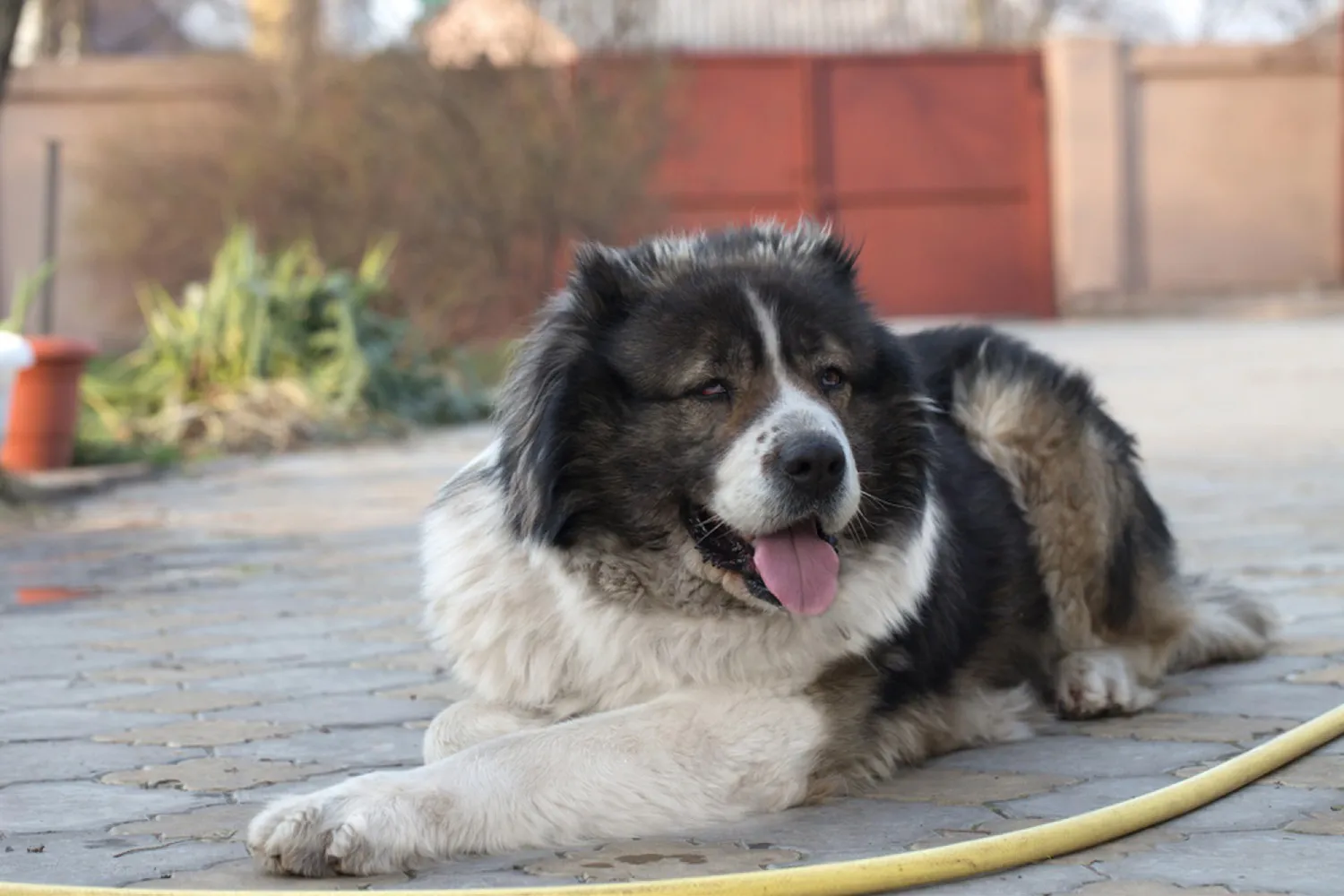
Average Weight and Height of the Caucasian Shepherd Dog
The first time I stood next to a full grown Caucasian Shepherd, I felt like I was meeting a small bear with a wagging tail. These dogs were bred to guard flocks and stare down predators, and their size absolutely reflects that purpose solid, powerful, and impressively tall.
For males, you’re typically looking at 50 to 100 kg in weight, with a height of about 69 to 76 cm at the shoulder. Females are a touch lighter and shorter, usually around 45 to 81.5 kg and 63.5 to 71 cm tall. That’s a big range, and it’s normal some lines are heftier, some leaner, and coats can make them look even more massive. Remember, height is measured at the withers (the top of the shoulder), not the head. I learned that the hard way when I tried to measure a friend’s dog who kept lifting his chin like he was posing for a royal portrait.
A couple of practical tips if you’re living with one of these gentle giants: invest in a sturdy, well fitted harness and a wide, strong leash. Their necks are thick, and you want pressure distributed comfortably. A raised feeding station can help with posture, and a supportive bed is worth every penny big dogs appreciate cushioning for their joints. I also swear by slow, steady conditioning instead of high impact play; think long, purposeful walks rather than zoomies on slippery floors.
If you’re curious about your dog’s weight and you don’t have a giant scale handy, hop on the bathroom scale holding your dog, then subtract your own weight. Sounds silly, but it works in a pinch. And for puppies, keep them on the lean side while they grow. Slow, controlled growth is kinder to developing joints my rule of thumb is to resist the urge to overfeed just because those fluffy paws look like they belong to a lion.
They’re big, no doubt, but with the right setup and routine, that size becomes part of their charm like a living, breathing, very protective throw blanket who happens to take up half the couch.
https://en.wikipedia.org/wiki/Caucasian_Shepherd_Dog
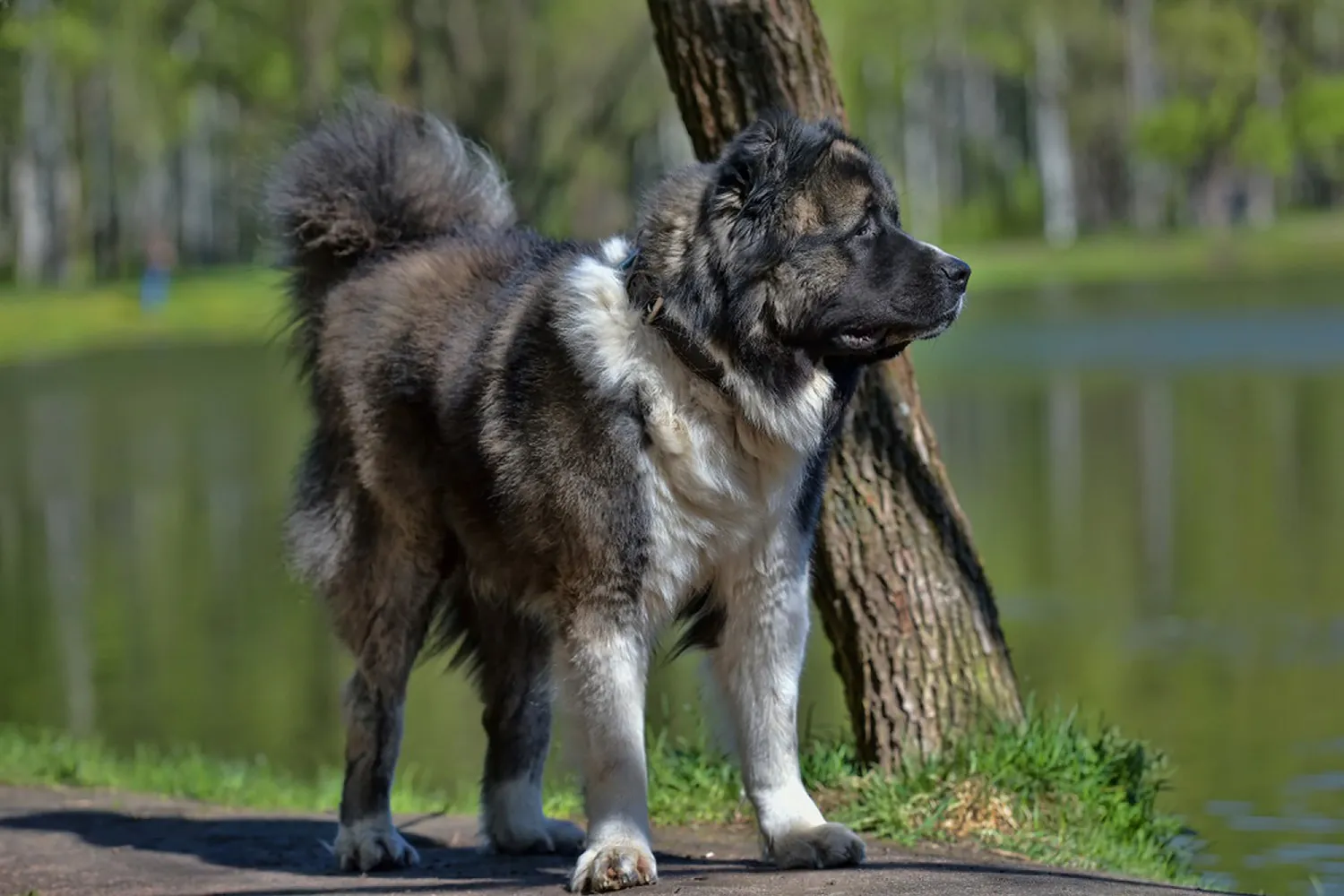
Are Caucasian Shepherd Dogs easy to train?
Short answer: not really. This is a breed that truly needs both obedience and socialization training, and they make you earn every bit of progress. They’re brilliant, but also independent and stubborn enough to ask “why?” before they even consider your cue. That’s not a flaw it’s the guardian mind at work. Start young, keep sessions short and clear, and use rewards they actually care about. My friend’s Caucasian, Bear, would ignore dry treats but turned into a star pupil for tiny chunks of roast chicken. Consistency matters, and so does ending on a win. Three good reps are better than 30 battles.
Thoughtful socialization is just as important as obedience. Focus on calm, controlled introductions to people, dogs, and places so they learn to relax and observe instead of overreact. Quality over quantity neutral, uneventful outings are a success. A long line in a secure area helps while you build reliable responses, because recall with a determined guardian breed can take time. I’d also suggest reaching out to a breed club or a reputable dog training organization to find a trainer experienced with large guardian breeds; the right guidance makes a huge difference.
Because they’re so smart, they need mental work or they’ll invent their own and you might not love the results. Mix in scent games, puzzle feeders, and simple “jobs” like place training or structured heel bursts on walks. I used a “place” mat with a neighbor’s Caucasian named Misha, and within a week she went from pacing to settling like a pro during family dinners. Keep their brain busy, keep expectations fair, and you’ll see that while they’re not easy, they are absolutely trainable with patience, structure, and the right support.
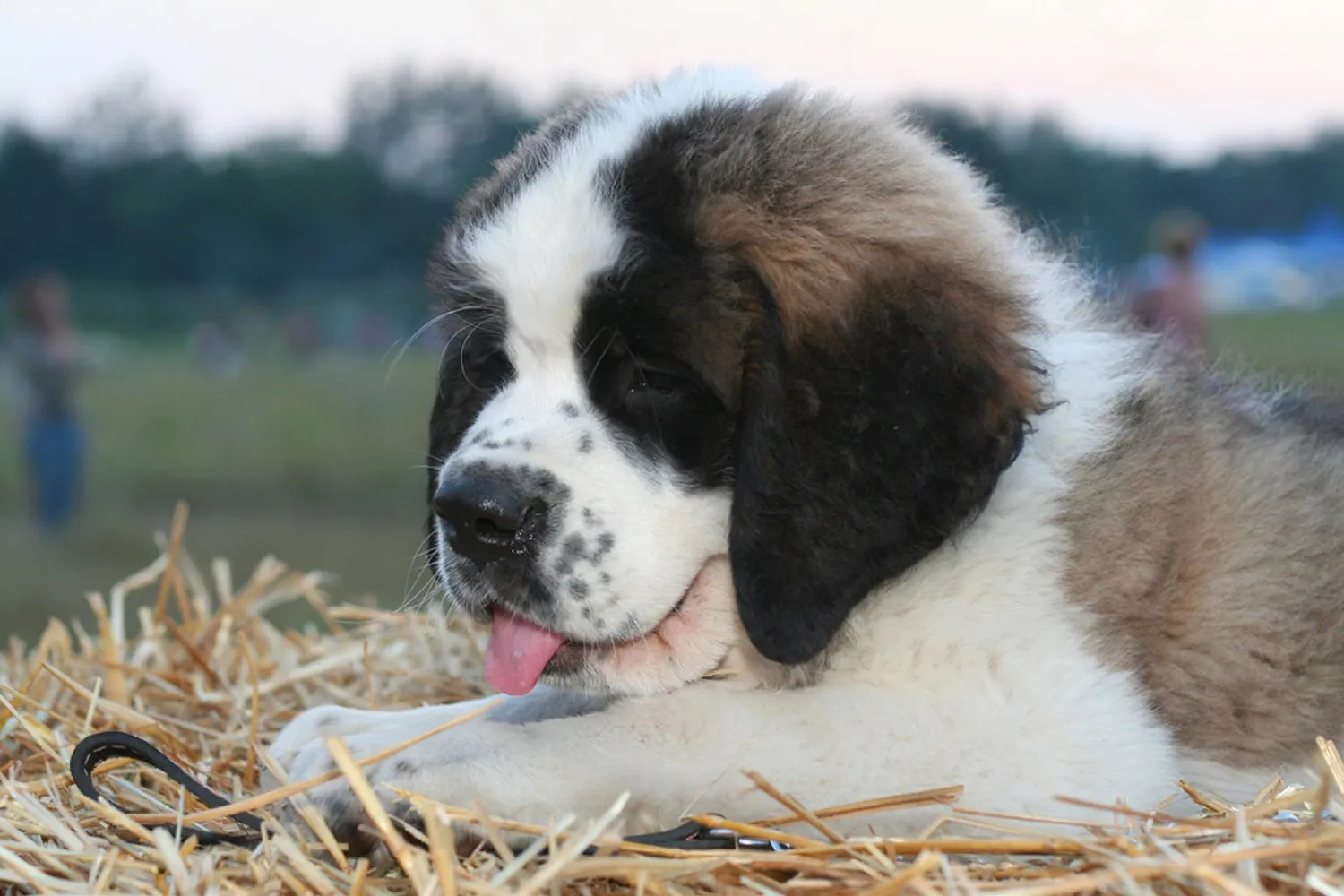
How Do Caucasian Shepherd Dogs Behave? A Look at Their Temperament and Personality
Caucasian Shepherds aren’t your standard “move into a city apartment and do the dog park” type of breed. They come from livestock guardian stock, and you can feel that heritage in everything they do. They’re deeply loyal and loving to their people, but they’re also independent souls who prefer to make their own choices. I once helped a friend dog sit a big male named Koda. He picked a spot by the back door like it was his post, watched the yard with quiet focus, and only wandered over for a quick ear rub when he decided it was time. That’s their style affection on their terms, steady and understated.
Don’t expect a snuggler. Many Caucasian Shepherds would rather stretch out nearby than pile onto your lap. Their affection looks like following you from room to room, leaning against your leg once, then stepping back to keep watch. They bond hard with their family, but strangers especially unfamiliar children are another story. This breed has a natural distrust of people they don’t know, and they are serious about protection. A breeder I spoke with in California told me, “They won’t pick a fight, but they will finish one if they think you need them.” I’ve seen that calm intensity up close; when a delivery driver came to the gate, Koda simply stood there, quiet as a statue, and made it crystal clear the fence was not a suggestion.
Day to day, they’re surprisingly low energy with an even temper. Inside, they can be big, fuzzy rugs that nap like it’s their job. But don’t mistake calm for weak these dogs are immensely strong and frighteningly capable if a threat shows up. Think stoic bodyguard, not class clown. They’re not ideal for a busy household with lots of spontaneous visitors. If you have guests, management is your friend: leash before opening the door, use a sturdy baby gate, and give the dog a clear “place” to settle. I like to prep a stuffed chew in another room so everyone can relax.
Training a Caucasian Shepherd takes patience, confidence, and consistent boundaries. They’re very intelligent, but they’re also independent and can be stubborn. If they decide they’re not moving, you’ll feel every pound of that decision. Keep sessions short, use high value rewards, and be crystal clear about rules you’ll enforce every single time. Start early socialization from puppyhood is non negotiable. Controlled, positive exposure to different people, calm dogs, and environments sets the foundation for a manageable adult. If you can, work with a trainer who knows guardian breeds; it makes a world of difference.
Bottom line: for the right, experienced owner, a Caucasian Shepherd can be a devoted, quietly affectionate family guardian. Give them space, structure, and respect, and they’ll give you a loyal companion who takes their job and your safety very seriously.
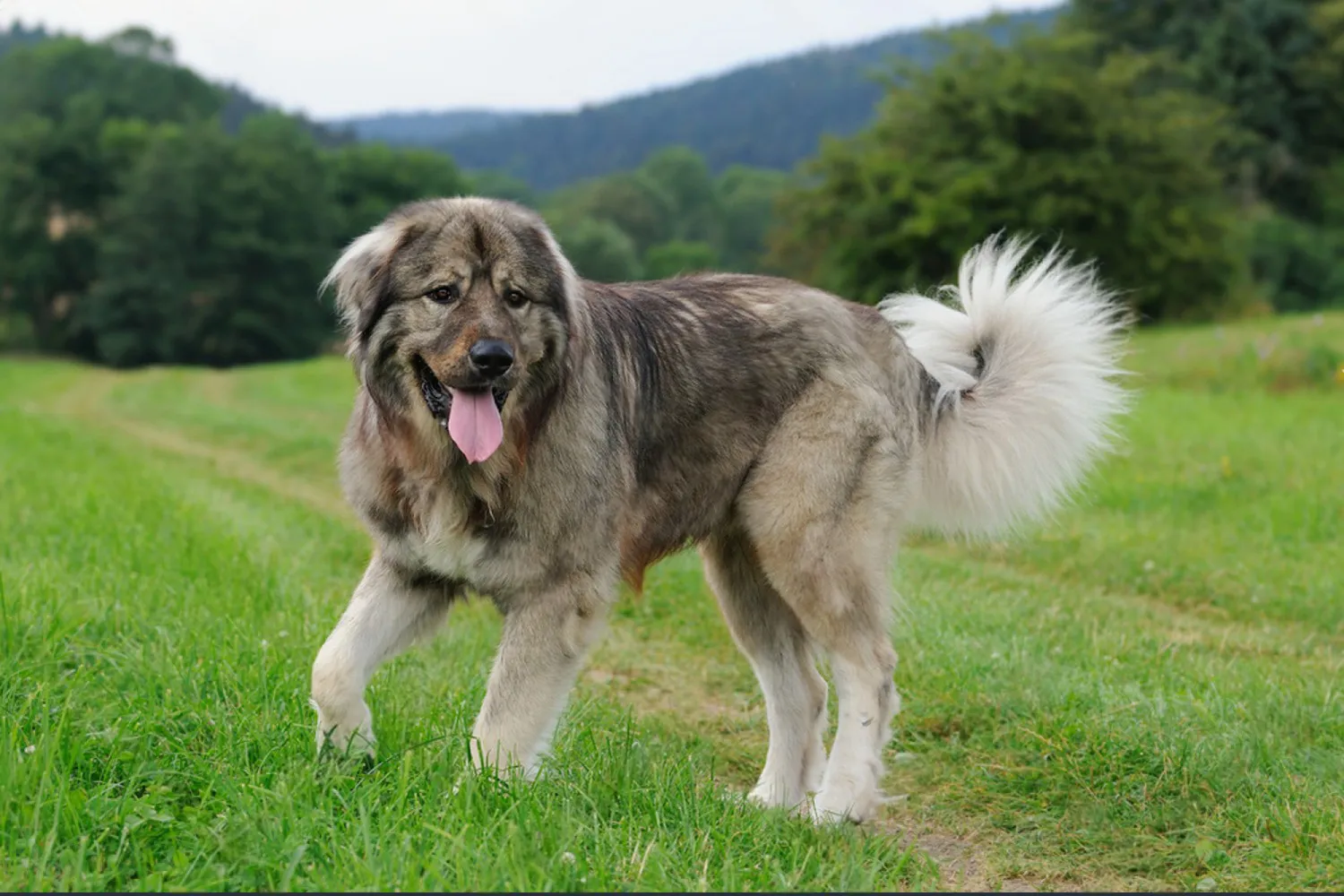
Does the Caucasian Shepherd Dog have any common health issues?
These big, bear like guardians are generally very sturdy dogs, especially when they get regular exercise, a sensible diet, and routine vet checkups. Mine have always seemed bombproof, but like any large breed, there are a few things I keep an eye on: hip dysplasia, obesity, cataracts, and ear infections.
Hip dysplasia can crop up in heavy, fast growing dogs. I watch for subtle signs like stiffness after naps or a bunny hop gait. Keeping puppies lean, avoiding too much jumping on hard surfaces, and sticking to steady, low impact exercise goes a long way. Ask your breeder about hip scoring, and talk to your vet about appropriate joint support if needed. My friend’s Caucasian Shepherd, Misha, did best with long, even paced walks and a comfy orthopedic bed.
Obesity is a sneaky one because these dogs are so big it’s easy to miss extra pounds. I measure meals, skip the bottomless treat bowl, and aim to feel ribs without pressing hard. A slow feeder turned out to be a game changer for my chowhound.
Cataracts tend to be more of a senior concern. Cloudy eyes, bumping into furniture, or hesitating in dim light are clues. Regular eye checks help; a neighbor’s senior had cataract surgery and was happily chasing shadows again within weeks.
Those thick coats can trap moisture around the ears, so ear infections happen. I do a quick weekly ear sniff and wipe, and I always dry ears after baths or rain. Head shaking or a yeasty smell means a vet visit for proper cleaning and meds.
With smart care and regular vet visits, most Caucasian Shepherds stay healthy and hearty for years.
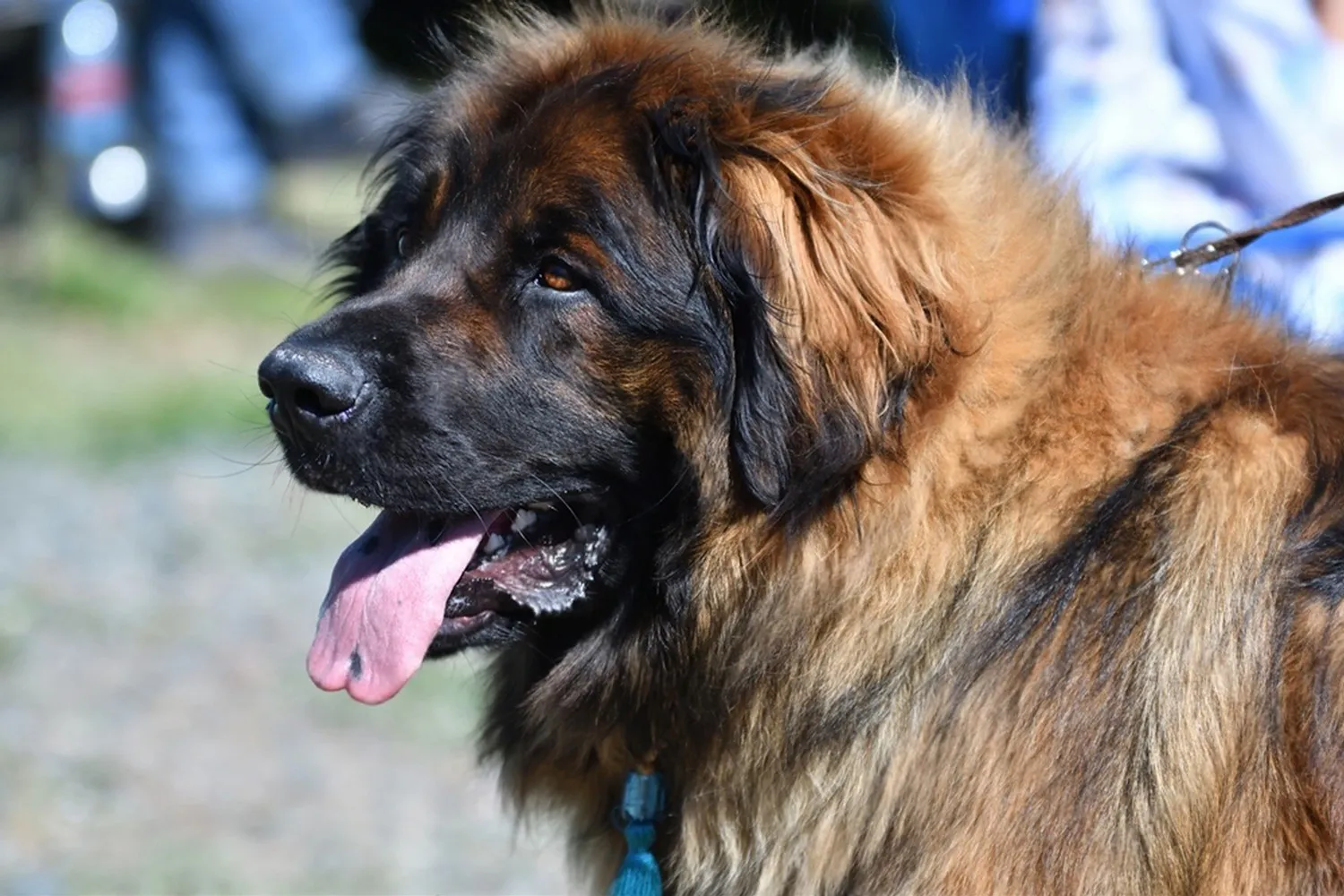
What Is the Lifespan of a Caucasian Shepherd Dog?
Caucasian Shepherds typically live about 10 to 12 years, which translates to roughly 70 to 84 in traditional “dog years.” For such a large, powerful breed, that’s a solid, average lifespan. My neighbor’s Caucasian Shepherd, a big teddy bear named Misha, started to gray around the muzzle at 8 but still trotted proudly on our evening walks well into her senior years.
A few habits can help your giant go the distance. Keep them lean extra weight is hard on big joints. I like steady, joint friendly exercise: long, unhurried walks, controlled play, and soft surfaces rather than daily marathons or slippery floors. An orthopedic bed and nail trims make a surprising difference in comfort. Feed a high-quality diet and don’t rush puppy growth; slow and steady is kinder to developing hips and elbows. Regular vet checkups are your early warning system for issues like arthritis or thyroid changes.
Don’t forget the heart and mind, too. These dogs are loyal guardians who thrive on a job. I used to give Misha simple “patrol” routines and puzzle toys; she’d finish, lean against me like a furry boulder, and sigh in contentment. With thoughtful care, many Caucasian Shepherds age gracefully, staying steady, smart, and wonderfully devoted throughout those 10 to 12 precious years.
How Much Should a Caucasian Shepherd Dog Eat?
With a dog this massive, feeding is all about balance not heaping scoops. Their size and steady energy mean they need a thoughtful diet that fuels them without packing on extra pounds. I’ve seen a neighbor’s Caucasian Shepherd balloon up when they tried free feeding. Switching to measured meals and consistent walks made a world of difference. These dogs can gain weight quickly, and once those extra pounds land on big joints, it’s tough on their bodies. Regular exercise is your best friend here: brisk walks, controlled play, and mental games to keep their minds and muscles working.
Puppies and adults are a completely different story. As puppies, they grow fast but need to do it slowly and safely. I always recommend a high-quality large breed puppy formula to support steady growth and joint health overdoing calories or calcium during puppyhood can cause problems later. As adults, many do well on two measured meals a day of a large breed formula, adjusted for activity level. I like to keep a simple food journal for the first few weeks with a new dog note portions, energy, and body shape. Aim for a visible waist and easy to feel ribs under a light layer of flesh. Treats count too; I stick to low calorie training bites and share a few crunchy veggies instead of cookies.
One more crucial note: this breed can be prone to bloat, which is life threatening. Talk with your veterinarian or a canine nutritionist about the right diet and feeding routine for your dog. Practical habits help: feed smaller, measured meals rather than one big one, use a slow feeder bowl if they inhale food, keep water available, and avoid hard exercise right before and after meals. I once watched a friend’s dog gulp dinner then dash after a ball never again. When in doubt, your vet’s guidance is the safest path for this gentle giant.
Caucasian Shepherd Dog FAQs
Is a Caucasian Shepherd Dog ideal for a first time dog owner?
No. This is a powerful, independent minded guardian breed that thrives with confident, experienced handlers. They need consistent training, clear boundaries, and patient socialization from day one. I once helped a neighbor with their Caucasian Shepherd, and even a simple sidewalk stroll felt like a team sport this dog watched everything, questioned every cue, and looked to us to prove we were worth listening to. They’re also not a great fit for homes with other family pets, as their protective instincts can make peaceful coexistence tricky. If you’re set on this breed, plan for serious training, secure fencing, and daily mental work think structured obedience, controlled introductions, and jobs that tap into their guardian brain. These dogs can be wary of strangers, including new owners at first, so slow introductions and calm, consistent handling are essential.
Do Caucasian Shepherd Dogs suffer from separation anxiety?
Like most dogs, they can struggle if left alone for long stretches especially once they bond with their family. It often takes time for them to fully relax in a new home, but when they do, they’re intensely loyal and don’t enjoy being separated. I’ve had good luck easing dogs like this into alone time: short, predictable departures, a stuffed chew or puzzle to work on, and quiet returns without a big fuss. Crate training can help if you introduce it gently and make the crate a cozy den, not a punishment. If you’re gone for hours, consider a trusted dog walker or a family member they know. A shirt that smells like you and a camera to check in can also make the transition smoother.
Are Caucasian Shepherd Dogs hypoallergenic dogs?
No definitely not one for allergy sufferers. They have thick, heavy coats and shed a lot, especially during seasonal changes when it can look like a snow globe exploded in your living room. Regular brushing is a must. I remember brushing a friend’s Caucasian Shepherd for ten minutes and ending up with a whole bag of fluff he looked proud of the harvest. Aim for several brush outs a week and daily sessions during big sheds. An undercoat rake and a slicker brush are your best friends. You can also run an air purifier and keep lint rollers handy, but if you’re sensitive to dog hair or dander, this breed will be a challenge.
Will a Caucasian Shepherd Dog need professional grooming?
Yes, and not just for looks because of their size and coat, professional grooming is usually the smartest route. Bathing a dog this large at home often turns into a slippery comedy show, and you’ll need a tub, high powered dryer, and experienced handling to do it safely. A groomer who knows giant, double coated breeds can manage de shedding, bathing, nail care, and ear cleaning without stress. I tried a DIY bath once and ended up soaked, the bathroom flooded, and the dog thrilled never again. Book regular appointments and start handling paws, ears, and tail early so your dog learns the routine. Bring high value treats and keep sessions calm and positive.
Bottom line: the Caucasian Shepherd is incredible for the right person devoted, brave, and steady but they’re not a starter breed. If you have the experience, time, and setup, they’ll repay you with unwavering loyalty and a watchful presence you can feel across the room.
Disclaimer:
This article is for informational purposes only and doesn’t replace professional veterinary or training advice. Always consult a certified vet or dog trainer for guidance specific to your pup.
